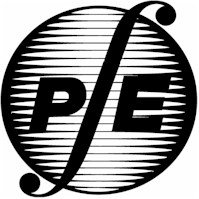Idaho Society of Professional Engineers
Friday Update - 06/25/04
UPCOMING EVENTS:
● NSPE 2004 Convention and Expo, July 8 -
10, 2004, Honolulu, Hawaii
● Mailing Deadline for FE and PE
applications for Fall 2004 testing, August 1, 2004
● ACEC of Idaho Annual Meeting, August 6 -
7, 2004, Sun Valley, ID
● NSPE Western and Pacific Regional
Meeting, September 17-18, 2004, Coeur d'Alene, ID
LIVE from Hawaii—NSPE
Annual Convention. Can't get to Hawaii for the NSPE 2004
Annual Convention? You can still attend two outstanding presentations over the
Web! "The 90-Minute MBA" and "Inviting Disaster: The Battle Between Man and
Machines" will be broadcast Friday, July 9, 2004, from 2:30 - 4 p.m. and 4:30 -
6:00 p.m. eastern time.
NSPE Wants Your Expertise
NSPE is frequently asked to provide expert input from members on a variety of
matters. Requests have included radio and TV interviews, print media interviews,
testimony before legislative committees, and participation in coalitions with
other societies or agencies.If you would like to volunteer as an expert source,
please fill out our online
form.

MATHCOUNTS PROBLEM OF THE WEEK
Can you solve this MATHCOUNTS problem? The answer will appear in next week's
edition of the Friday Update!
June Wedding Math
June is known as the month for weddings! Let’s take a look at some math before,
during, and after the ceremony. Before the ceremony, there are often a lot of
out-of-town guests making their way to the big event. If the 290-mile drive to
the wedding took the Baldrate family 5.5 hours, and the drive back home took
7.75 hours, what was their average speed for the round-trip journey? Express
your answer as a decimal to the nearest tenth.
--------------------------------------------------------------------------------
Now that everyone has made it to the wedding ceremony, the ceremony can begin!
In many weddings, there is a processional song that plays while the bridesmaids
walk down an aisle to the front of the congregation. Kelly’s processional song
is exactly 5 minutes, 30 seconds and she has five bridesmaids. At the rehearsal,
they found that it took 43 seconds, on average, for each bridesmaid to complete
her walk down the aisle. Kelly wants 10 seconds of the processional song to play
before the first bridesmaid starts her walk. She also wants the last bridesmaid
to finish her walk just as the song ends. In order for this to happen, there
must be a pause between the end of one bridesmaid’s walk and the beginning of
the next bridesmaid’s walk. If this pause-time is to remain consistent for each
pair of consecutive bridesmaids, how many seconds of pause-time should there be
between the end of the one bridesmaid’s walk and the beginning of the next?
Express your answer to the nearest whole number.
--------------------------------------------------------------------------------
Once the ceremony has ended, many weddings have a celebration, party or
reception afterwards. At Kelly’s reception, 137 guests will be seated at a
combination of different-sized round tables. Kelly can use any combination of
12, 11 and 10-person tables. If every seat at every table is used, what is the
greatest number of 12-person tables that she can use?
Answer to last week's problem:
The other 44 states must include the remaining 75 percent of the students.
If we were to divide these students equally among the 44 states, we would see
that each state includes approximately .75 ÷ 44 = 1.7%, to the nearest tenth, of
the country’s high school students. Obviously states like California have more
than this portion of the students, but this is the average amount per state for
these 44 states.
--------------------------------------------------------------------------------
We’re told that 50% of the students passed the algebra portion and 60% of the
students passed the government portion. To get the greatest possible percent
that could have passed both, we would have to assume that everyone who passed
algebra also passed government. That would mean that it’s possible for 50% of
the students to have passed both. To find the least possible percent of the
students who could have passed both, we would have to assume that as many kids
as possible only passed one and not the other. We see, though, that 50% and 60%
is greater than 100% by 10%. Therefore, these two groups must overlap by at
least 10%, giving us the number we’re looking for. The positive difference
between the greatest possible percent of students who passed both the algebra
and government portions and the least possible percent of students who passed
both of these portions is then 50 – 10 = 40%.
--------------------------------------------------------------------------------
Since 2 out of 25 students have red hair, that means that 8 out of 100 students
have red hair. This is 8% of the students. If there are 2200 total students,
then 0.08 × 2200 = 176 students have red hair, according to the initial ratio.
If you want to see last week's problem again, click on
http://www.mathcounts.org/Queries/POW_Archive.taf?_function=detail&Q_A_uid1=499&_UserReference=7FBB0D8BC579466440D9DD74
Idaho Society of Professional Engineers
PO Box 170239
Boise, ID 83717-0239
208-426-0636
Fax: 208-426-0639
E-Mail: ispe@rmci.net
Web Site: www.Idahospe.org
 Idaho
Society of Professional Engineers
Idaho
Society of Professional Engineers